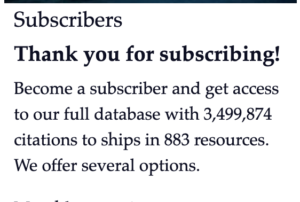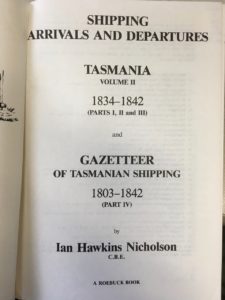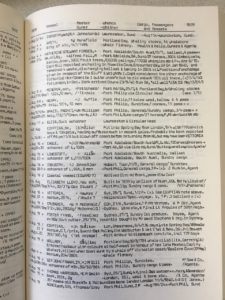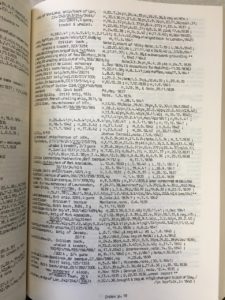The ShipIndex database continues to grow: according to this screen grab from our home page, we’re just 126 citations away from 3.5 million citations!

This is certainly a new record for ShipIndex.org content, but it has taken a long time to get here. Several years ago, I had to remove some 380,000 citations from the database, because the online resource containing those citations disappeared. But we’ve been adding lots more content since then, and we’ve recovered and gotten beyond where we’d been.
Here’s content that has been added since the last list I posted. Lots more is in process, as always.
- Conway’s All the World’s Fighting Ships, 1906-1921. London: Conway Maritime Press, 1997.
- The Canadian Collection: Ships Database. Picton, ON: Naval Marine Archive, 2018-.
- Bluejackets and Boxers: Australia’s Naval Expedition to the Boxer Uprising. London: Allen & Unwin, 1986.
- Shipping Arrivals and Departures: Tasmania. Volume I, 1803-1833, Parts I, II, and III. Canberra, NSW: Roebuck Society, 1983.
- Shipping Arrivals and Departures: Tasmania. Volume II, 1834-1842 (Parts I, II and III) and Gazetteer of Tasmanian Shipping 1803-1842 (Part IV). Canberra, NSW: Roebuck Society, 1985.
- Pioneers of the Pacific: Voyages of Exploration, 1787-1810. Fairbanks, Alaska: University of Alaska Press, 2005.
- Connecticut’s Naval Office at New London During the War of the American Revolution, Including the Mercantile Letter Book of Nathaniel Shaw, Jr. New London, Conn.: New London County Historical Society, 1933.
- Tees Built Ships: Ships Built on the River Tees, Hartlepool, and Whitby. Shipping and Shipbuilding Research Trust, 2014-.
- The American Navy, 1789-1860: A Bibliography. Metuchen, NJ: Scarecrow Press, 1964.
- The American Navy, 1865-1918: A Bibliography. Metuchen, NJ: Scarecrow Press, 1974.
- The American Navy, 1918-1941: A Bibliography. Metuchen, NJ: Scarecrow Press, 1974.
- Shipping Arrivals and Departures: Victorian Ports. Vol. I 1798-1845. Melbourne, Victoria: Roebuck Society, 1984.
- Shipping Arrivals and Departures: Victorian ports. Vol. II 1846-1855. Melbourne, Victoria: Roebuck Society, 1987.
- American Activities in the Central Pacific, 1790-1870 : A History, Geography and Ethnography Pertaining to American Involvement and Americans in the Pacific Taken From Contemporary Newspapers, etc. Ridgewood, NJ: Gregg Press, 1967.
- All Afloat: A Chronicle of Craft and Waterways. Toronto: Glasgow, Brook & Co., 1920.
Several titles are worth particular attention. The four volumes published by the Roebuck Society are especially valuable for southern Pacific research, but they’re tricky to use. I wrote a blog post about just those volumes last week, and more titles from the Roebuck Society will be added over time.
Ward’s collection of notes from newspapers, about American activities in the central Pacific, is also interesting — the 7 volume set is remarkable in its own right, printed on heavy paper and with a volume of illustrations and maps, if I remember correctly. It’s organized geographically, which makes finding the entries a bit of a challenge. It’s also probably not a particularly common title, but if it mentions the ship you’re researching, those citations from contemporary newspapers are going to be pretty valuable!
I plan to write a brief blog post about the effects of low technology on this data, regarding the Naval Marine Archive, in the next week or two.
As always, let us know if you have titles to suggest we add.



